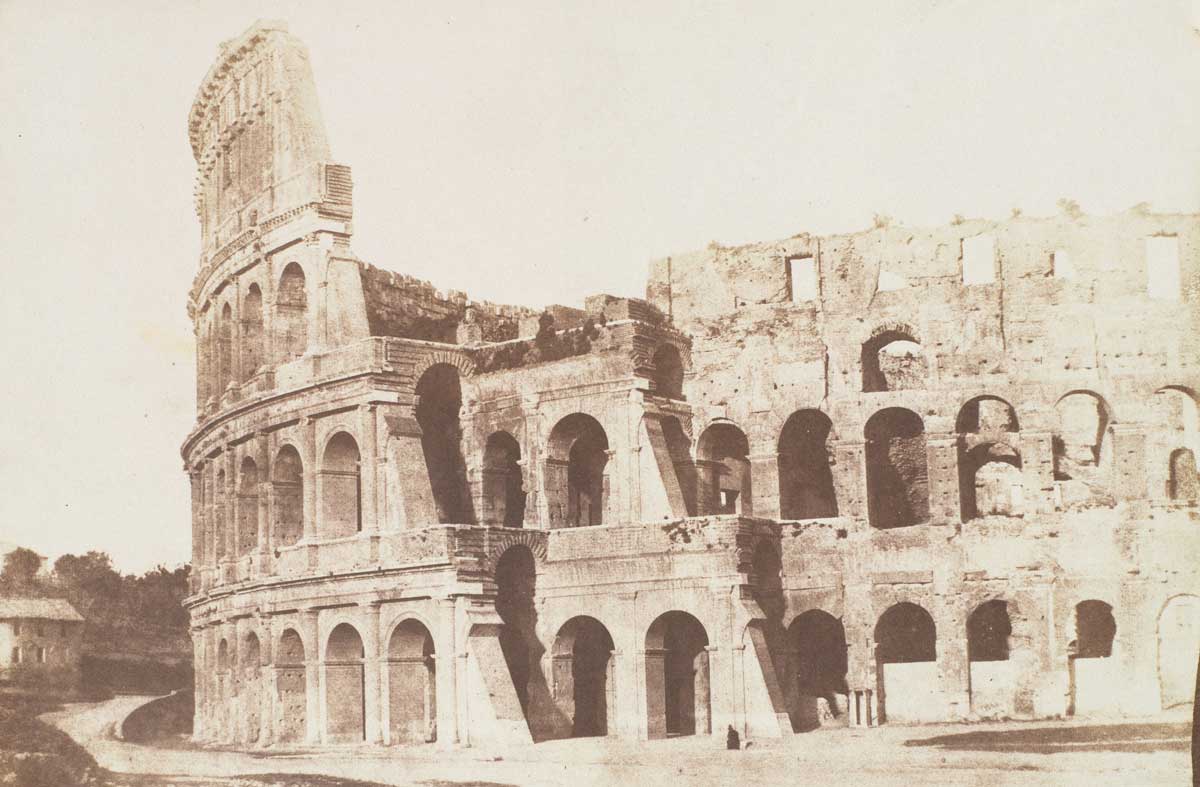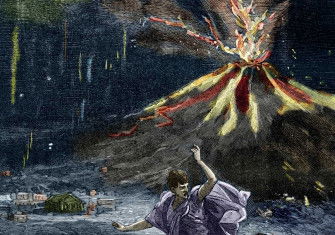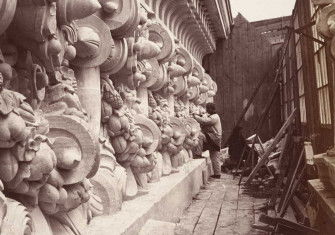Reading Ruins
The rhetorical ruins of Tenochtitlan, Rome and Baghdad.

‘The ruins are still standing’, the writer Brian Dillon once quipped, ‘but what do they stand for?’ Martin Devecka, Professor of Classical Studies at the University of California, Santa Cruz, is the latest in a long line of scholars to attempt to answer this question in his book Broken Cities.
At its heart, Broken Cities is a collection of essays on the shifting cultural understanding of ruins across history, in the form of four case studies: Classical Greece, ancient Rome, Baghdad and the vanished Aztec capital of Tenochtitlan. But the book also aims to be a potted history of the evolution of the idea of the ruin up until the end of the 16th century.
It is a common enough observation that the ruin is not an inert object. Throughout history, the crumbling walls of ancient cities have formed battlegrounds for meaning. Dictators have enrolled them into official propaganda, European explorers have claimed ownership of them, while local people have spun folklore about them, even as they used them as quarries. In recent history, extremist groups have attempted to destroy them as part of a strategy of terror. The ruins of war, in cities like Mosul and Aleppo, reach us via drone-carried cameras on our ultra-high definition screens. These modern ruins form visual testaments to the senseless violence of conflict. In our own cities, the existence of the decaying ruins of industrial projects or the overgrown terraced houses of shrunken towns, act as eloquent critiques of the western narrative of the forward march of technological progress.
Where Devecka departs from this well-trodden path is to treat ruins not only as political entities, but as fundamentally rhetorical, a purposeful process undergone in the service of elites. ‘Ruination’, he argues, ‘is a tactic in a social conflict that has been ongoing since the first cities were settled and that continues in the present.’
For this reason, Devecka is not always interested in the ruins themselves. He is not a Romantic. He avoids rhapsodising about crumbling walls and broken bathhouses, fragmented arches and overgrown streets, and instead treats the ruin largely as a concept untethered from material reality. This approach allows Devecka to discuss ruins in Hellenic Greece, while arguing – perhaps with too much confidence – that ‘lasting ruins … were impossible in classical Greece’. Cities are resilient, he argues, and people are persistent. When a city burns, they usually creep back to reoccupy its ruins. But despite the lack of any visual reminder of ruin moldering in the landscape, Devecka argues, the future prospect of ruin was forever in the mind of the Athenians and other Greeks. The future ruin of Athens loomed over them, as the great power of Persia flexed its muscles on the other side of the Hellespont.
Some readers may find themselves frustrated by Devecka’s narrow definition of the ruin, restricting its varied nature to ‘an entire city, ruined by war and left abandoned’. But Devecka’s concern is with the ruin as rhetorical token. He points out that Greek writers spoke little about the ruins left by natural disasters, for instance, since they serve little rhetorical function. As he observes: ‘You can’t argue against a volcanic eruption.’
Still, Devecka could make more of the times when the mercurial form of the ruin resisted these uses as rhetoric. We know that the Greeks did live among the ruins of much more ancient civilisations, such as the Myceneans and Minoans, and that they told stories about them. For the ancient Greeks, as for many cultures that followed, these ruinscapes spurred their imaginations to venture outside the realms of the real. They told stories about how these great walls had been built by Cyclopes – an ancient version of the ‘built by aliens’ conspiracy theories propagated today. Devecka argues that because these cities were quickly reoccupied, they became ruins no longer. But as with cities today, the people of the past lived among an urban fabric scattered with ruins and vacant lots, houses with fallen-in roofs and defunct workshops.
It takes grander and often more ephemeral processes to convince people that a city should be left entirely and for a state to engage in what Devecka calls ‘a ruin-making project’. These processes are sometimes the grinding gears of the material world – shifting economic centres – but they are sometimes spiritual or intellectual developments, as Devecka successfully shows in his discussion of Baghdad. For Islamic thinkers, the ruins of the past became spiritually suspect, even diabolical, and were places to be avoided.
Devecka’s proficiency in Greek, Arabic and Spanish allows for close readings that illuminate his discussion of the ruin, often identifying subtle shades of meaning that make his analysis sharp and revealing. In his discussion of the Arab pre-Islamic or Jahili poets Devecka offers an interesting discussion of how and why poets of that era reacted to the ruins of the Sasanian Empire and the shattered remains of its capital Ctesiphon, the broken arch of which decorates the book’s front cover. Devecka attempts to read the Quran as a text that situates itself temporally and spatially in relation to ruins and uses them to form a moral about obedience to God. While cities like Baghdad boomed, the crumbling ruins of the past were looked on with disdain.
Finally, Devecka brings us up to the modern age, or at least to its beginning. With the destruction of the Aztec island city of Tenochtitlan – then probably one of the largest cities in the world – the age of European domination of the Americas began. Devecka uses the Cartas of Hernán Cortés, along with 16th-century indigenous sources, to show that in many ways the idea of the ruin had come full circle, back to its roots as a focal point of rhetoric. Broken Cities is an ambitious and important contribution to the field of ruins studies.
Broken Cities: A Historical Sociology of Ruins
Martin Devecka
Johns Hopkins 184pp £26
Paul Cooper is a doctoral researcher, novelist and the host of the Fall of Civilizations podcast.






